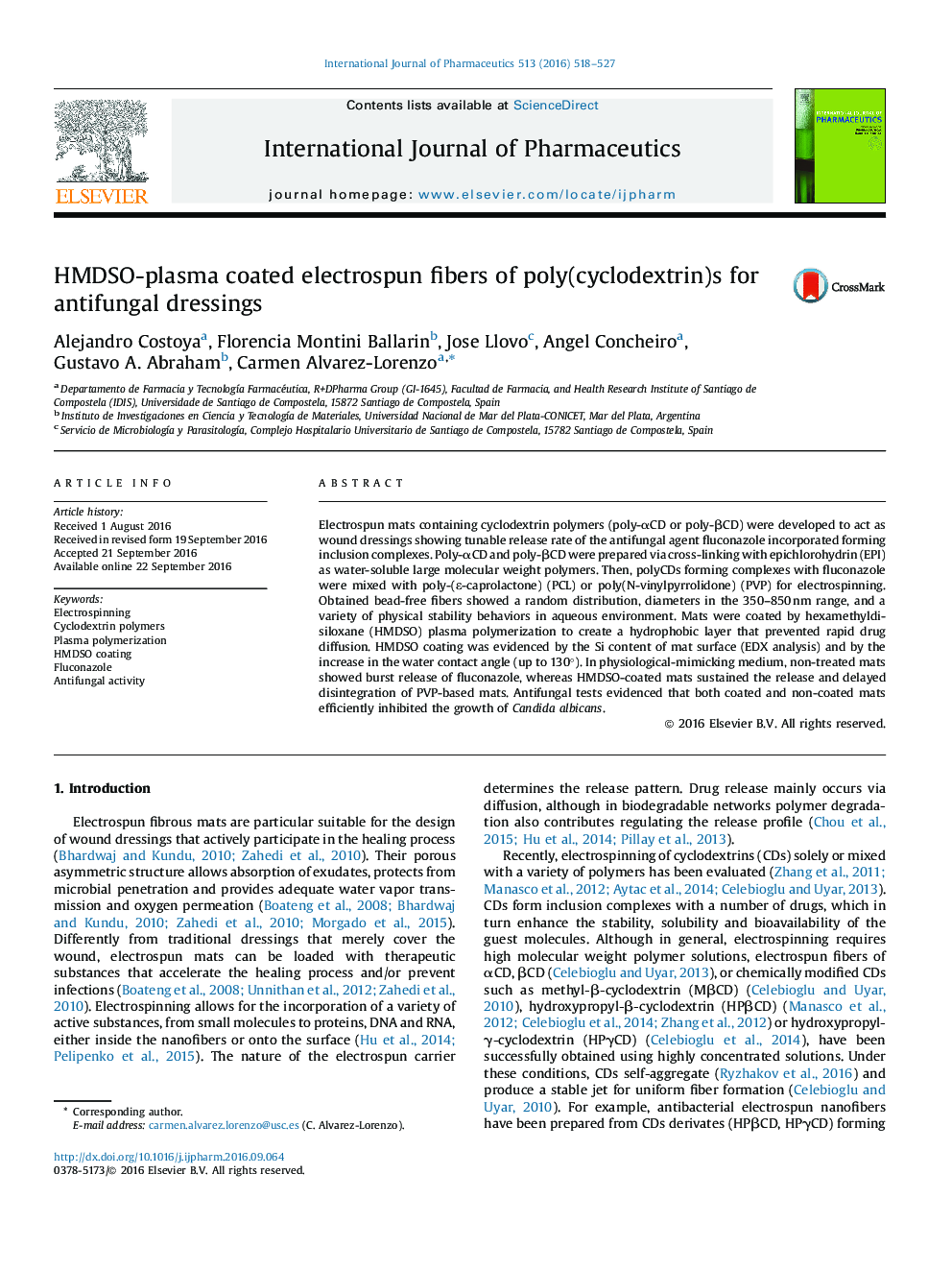| Article ID | Journal | Published Year | Pages | File Type |
|---|---|---|---|---|
| 6481866 | International Journal of Pharmaceutics | 2016 | 10 Pages |
Electrospun mats containing cyclodextrin polymers (poly-αCD or poly-βCD) were developed to act as wound dressings showing tunable release rate of the antifungal agent fluconazole incorporated forming inclusion complexes. Poly-αCD and poly-βCD were prepared via cross-linking with epichlorohydrin (EPI) as water-soluble large molecular weight polymers. Then, polyCDs forming complexes with fluconazole were mixed with poly-(ε-caprolactone) (PCL) or poly(N-vinylpyrrolidone) (PVP) for electrospinning. Obtained bead-free fibers showed a random distribution, diameters in the 350-850 nm range, and a variety of physical stability behaviors in aqueous environment. Mats were coated by hexamethyldisiloxane (HMDSO) plasma polymerization to create a hydrophobic layer that prevented rapid drug diffusion. HMDSO coating was evidenced by the Si content of mat surface (EDX analysis) and by the increase in the water contact angle (up to 130°). In physiological-mimicking medium, non-treated mats showed burst release of fluconazole, whereas HMDSO-coated mats sustained the release and delayed disintegration of PVP-based mats. Antifungal tests evidenced that both coated and non-coated mats efficiently inhibited the growth of Candida albicans.
Graphical abstractDownload high-res image (160KB)Download full-size image
